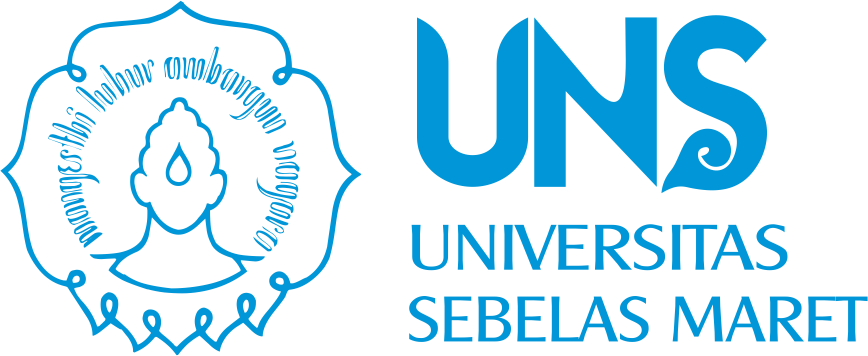UNS — The dr. Prakosa Rectory Building is a historical building for the establishment of the Universitas Sebelas Maret (UNS) Surakarta. The dr. Prakosa Rectory Building established on March 11th, 1978, has a function as the Office for the Rector, Vice-Rector(s), and main administration. As an iconic building, which becomes the background for students’ photos during convocation, the building has many historical stories and unique facts.
One of the popular questions from the public is whether the shape of dr. Prakosa building is similar to the burial site of the late Indonesia Second President, Soeharto, in Giribangun. To answer this, uns.ac.id send a direct inquires to the expert in Javanese architecture, Dr. Titis Srimuda Pitana. In a meeting with Dr. Titis in his office, in Deanery Office for the Faculty of Engineering (FT) UNS, he answers that both the UNS Rectory Building and Soeharto’s burial site in Astana Giri Bangun, use the sacredness concept in Javanese architecture.
The sacredness concept referred to by Dr. Titis can be seen from the roof shape of both buildings with tajug shape. Tajug is a roof shape with a pyramid or square pyramid shape, with an equilateral square base, where the peak is located in the middle of the structure. This roof shape is commonly found as a mosque roof in various locations in Indonesia. However, Dr. Titis dismissed the element of intent in the similarities between the two buildings. He further states that there is no involvement of the late President Soeharto’s wife, Ibu Tien (deceased), in choosing the architectural concept for the dr. Prakosa Rectorate Building.
“Not same, but (both buildings) use sacredness concept. The form is different but the shape is the same, the concept of form is at the idea level, but the embodiment is at the physical level,” Dr. Titis states.
Further, Dr. Titis discuss the position of the Rectory Building relative to the UNS campus layout, which has a ‘pajupat’ concept. The ‘Pajupat’ or ‘papat kiblat limo pancer’ (four corners five directions) place the dr. Prakosa Building is surrounded by other buildings.
“The four corners (papar kiblat) are the four cardinal directions. If we consider the spatial concept, the middle section is a meeting place for 4 forces from the 4 cardinal directions and it converges in the middle,” he adds.
The position of the dr. Prakosa building surrounded by many other buildings symbolizes the competency of this building in stabilizing, synchronize, and harmonize the spatial condition. Not only discussing the architectural design of dr. Prakosa Building from the outside, Dr. Titis details the philosophy of the building. He explains that in the Javanese building concept, the lowest part of a building is not the foundation, but the ‘pamidhangan’.
‘Pamidhangan’ which means shoulder, according to Dr. Titis, is a symbol of strength to bear burdens. Thus, discussing the philosophical meaning, a leader (in this aspect, the Rector) must be able to bear an extensive burden. The strength of ‘pamidhangan’ in the dr. Prakosa Rectory Building is located in the extending beam and the tow beam that support the ‘tumpang sari’. The function of ‘tumpang sari’ is to support the ‘brunjung’ (the slope of the prism roof) to the top of the building (roof).
“This structure went all the way up to the top, known as ‘molo’ or ‘polo’ in Javanese, which means ‘brain’. Thus, no matter how heavy the task of a leader, they must be able to use their common sense,” he explains.
In the middle of dr. Prakosa Building there is a lamp hanging from the top to the first floor. This lamp, however, is not only a decoration but it has a philosophical meaning. The meaning of the lamp is ‘telupak’ or ‘telu sing cumepak’, which signifies the three crucial aspects that must exist on earth. These three aspects are related to the Higher Education Tri Dharma namely education, research, and community engagement. “Trinity in Nasrani there are Father, Son, and Holy Spirit. Whilst in Islam, there are Allah, Qur’an, and Prophet. Thus, a leader must be able to provide an explanation all the time, give direction, and instruction based on the three aspects,” Dr. Titis concluded.
The History of dr. Prakosa Rectory Building
Aside from an interview with Dr. Titis, uns.ac.id also contacts the Head of Historical Science Study Program, the Faculty of Cultural Studies (FIB) UNS, Dr. Susanto, to understand the history of dr. Prakosa Rectory Building. When contacted through messaging service on Thursday (31/12/2020), Dr. Susanto states that dr. Prakosa name used as UNS Rectory Building was the name of UNS Rector at that time, Brigjen TNI. dr. Prakosa. During the development of the UNS Kentingan campus at that time, he prioritized the establishment of the UNS Rectory Building.
“The first structure built was the Rectory Building, aside from several faculties building, using the budgetary fund for the 1977/ 1978 period. The establishment started on March 11th, 1978. But the priority was the Rectory Building,” Dr. Susanto explains. He added that the role of dr. Prakosa at that time is enormous. His contribution was proven with the success of the Main UNS Kentingan Campus establishment, with a total area of 60 hectares in 1986.
“How great was the role of dr. Prakosa, who led UNS for 2 periods starting 1977 to 1986. Therefore, in appreciation of his services, the UNS Rectory Building was named after him, dr. Prakoso Building,” Dr. Susanto reveals.
Dr. Susanto also added that the development of the Rectory Building was followed by the establishment of the Auditorium and the main UNS Library. During the leadership of Prof. Ravik Karsidi, the UNS Auditorium was named G.P.H. Haryo Mataram, who is the first UNS Rector. Humas UNS
Reporter: Yefta C
Editor: Dwi Hastuti

